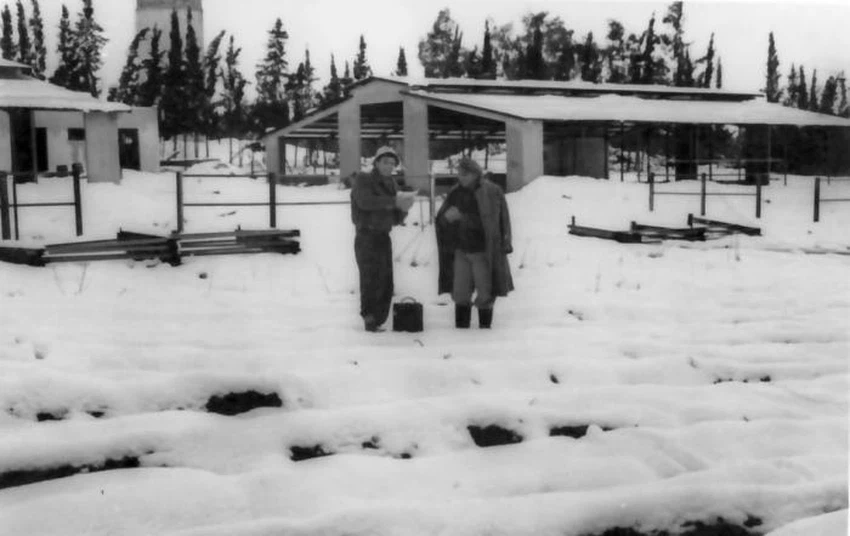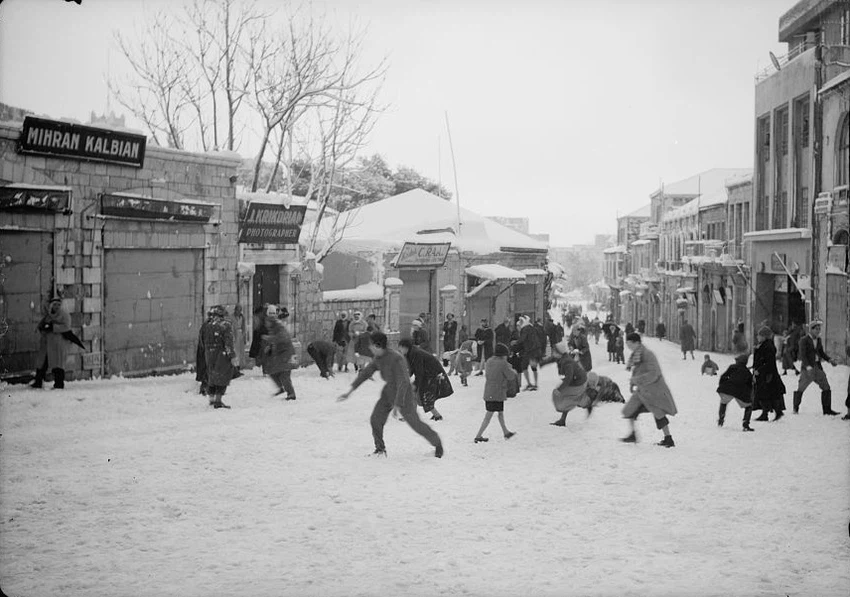Not only the Gulf Coast of the United States, climate extremes affected the Levant region 75 years ago
Arab Weather - The United States of America is still exposed to the consequences of the extreme, very cold polar mass that affected it during the past few days, which rushed directly from the North Pole towards the northern states and continued its path in a rare manner towards the southern regions.
In a rare climate extreme, polar winds reached the states on the Gulf Coast, states that are characterized by a warm tropical climate throughout the year and it is difficult for snow to fall on them. However, fate willed that the polar air extend directly from the North Pole towards those regions to meet with the warm current across the Gulf of Mexico, which led to heavy snowfall in a rare and extreme event.
The extremism of the atmosphere knows no time or place, and snow actually visited the Ghor regions in the Levant one day!
Some may wonder, is climate extremes limited to North America or Europe? The answer is no, as climate extremes have previously affected the eastern Mediterranean basin, including all the countries of the Levant. Snow actually fell at sea level and even fell below that, extending to the Jordan Valley and the Dead Sea in Jordan. But how?
The Impossible Storm February 1950
Archival data indicates that the Levant region was indeed exposed to an extremely extreme weather event in February 1950, specifically between the 4th and 8th of the same month. Despite the weakness of the weather data available at the time, the weather data generated through the reanalysis conducted by the National Center for Environmental Planning confirms that the Levant region was exposed to the rush of a very cold and huge polar mass across southeastern Europe directly towards the region.
Details of the snowstorm and extreme snowfall below sea level
According to archival data, a polar mass rushed directly from eastern Europe towards its south, and settled for several days over the Black Sea and Turkey before sliding directly and with full force towards the eastern Mediterranean basin, affecting the Levant, Sinai, Turkey, Cyprus and northern Saudi Arabia on February 4, 1950.
The polar mass was accompanied by record values in terms of coldness, and the depth in it reached a height of less than 5240 meters in the 500 hectopascal layer, and the temperature in the 850 hectopascal layer close to the surface reached about minus 10 degrees Celsius, which are very extreme values and are enough to freeze everything and snow to fall at low levels reaching sea level and less than that.
Indeed, the photo archive shows some areas of the Levant at that time, including snowfall on the Mediterranean coast, the northern Jordan Valley, and the Dead Sea, which is the lowest spot in the world, with an elevation of 400 meters below sea level, in a very rare event. The snowfall continued for more than a day, and the snow accumulation reached 60 cm in the Safed area, 100 cm in Jerusalem, 17 cm in Haifa, and 12-19 cm in Tel Aviv and Lod. Snow also fell in the mountains surrounding Lake Tiberias and in the Negev.
In Jordan, the snow depth reached about a meter in the Jordanian capital, Amman, and the snowfall extended to the lowest spot in the world, the Dead Sea area. It is said that the severe cold caused the death of 70 Jordanians and Palestinian refugees in Jordan. Below are archival photos from the famous storm:




Arabia Weather App
Download the app to receive weather notifications and more..



